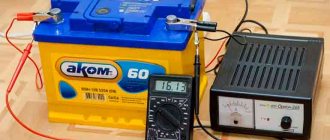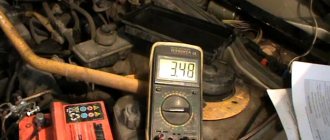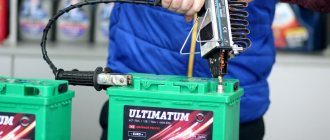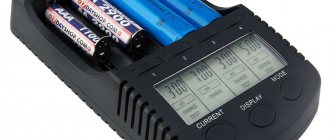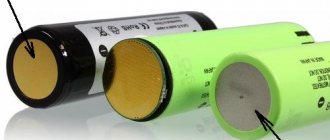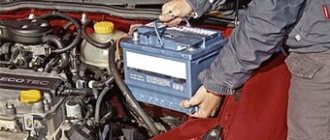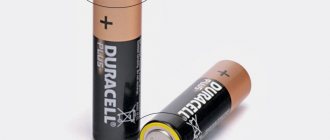The rechargeable battery (ACB) of a car is a particularly significant element of the machine. It is a source of current that has the ability to store the energy needed to operate the electrical elements of the vehicle.
Its functions are responsible for:
- Starting - supplying energy to the starter, which is responsible for rotating the engine when starting.
- Generation of current for the operation of electronic systems in case of insufficient generator power.
- Powering devices when the car is not started.
Characteristics of a maintenance-free battery
Battery marking
Today's level of technical development has made it possible for automakers to use the most advanced and high-quality batteries - maintenance-free batteries.
The design of a maintenance-free car battery has characteristic features that give consumers a pleasant opportunity to pay a minimum of attention to this battery.
Car Battery Maintenance
It is worth noting that a maintenance-free battery is a modern source of energy, which in its design does not require or have special holes for adding water or electrolyte; the case of these batteries is completely sealed.
More than 150 years have passed since the development of the car battery and its basic structure remains unchanged for any type of battery to this day. The main elements of the battery are: acid and lead plates.
Scope of application
It would be wrong to think that lead-acid batteries are used exclusively in the automotive industry. Yes, in terms of quantitative indicators, car batteries are the undoubted leaders. But they are successfully used in other areas:
- in the production of lighting equipment;
- as emergency sources of power supply;
- in security systems, to provide power to alarms;
- for instrumentation devices;
- they are supplied to household and industrial UPSs;
- Such batteries are installed in children's cars and wheelchairs.
In conclusion, we can confidently say that batteries of this type will not soon go into circulation: their demand is due to the simplicity of their design, low cost, high capacity, low internal resistance and, as a consequence, low level of self-discharge.
Battery design
Modern batteries consist of the following main elements:
- Plates (voltaic cells)
- Separators - interlayers
- Pole terminals
- Sealed housing (monoblock)
- case cover
Battery cells
Battery plates
The technical design of rechargeable batteries includes galvanic cells (plates) - chemical sources of electricity. There are 6 of them, they are connected to each other in series using jumpers. One negatively charged terminal of the block is attached to the positive terminal of the other.
Galvanic cells are located in a separate housing, and they are separated by partitions. Together, the batteries form a battery.
The galvanic cell of a car battery is a reversible source of chemical current - this means that the charge-discharge cycle can be repeated several times. It consists of two electrodes (semi-blocks) of different polarities - lead lattice plates. The electrodes are placed in a solution of sulfuric acid (38%) and distilled water. Their mixture is an electrolyte - a substance capable of conducting current.
Separators - interlayers
Between the electrodes, to avoid short circuits, there is a separator - a dielectric layer. The separator acts as an insulator and does not allow electrodes of different polarities to come into contact, but does not disrupt the electrolytic conductivity of the battery.
The separator is made of plastic with a microporous structure, in the form of an envelope, placed on galvanic elements of a positive charge. This technique helps the active mass from the positively charged plates not to settle at the bottom of the monoblock and not come into contact with the negatively charged plates.
The development of an envelope-shaped separator device allowed battery manufacturing companies to come up with low-maintenance and maintenance-free batteries.
Pole terminals
The battery terminals are made of lead. Their size varies depending on the polarity of the terminal, so the positive one is larger in relation to the negative one. This feature is not accidental and serves as protection against incorrect connection of battery elements, which in turn eliminates the loss of active masses and helps to avoid a reduction in battery performance.
Sealed battery case
The battery case (monoblock) has undergone its evolution from wood, coated on the inside with sheet lead, then - ebonite.
In the 40s The first cases made of synthetic materials appeared in the 20th century. Modern batteries are made of synthetic polypropylene. Great demands are placed on the materials of monoblocks regarding its durability and safety. The housing is designed to withstand constant contact of chemical components, vibration and temperature changes.
case cover
The purpose of the housing cover is to tightly close the inter-element connections of the battery. In previous batteries, the cells had threaded plugs designed to add electrolyte and remove gas during battery operation. In the design of a maintenance-free battery, the plugs are not installed at all, or are tightly closed. Gases are removed using a central ventilation system.
It consists of two parts and is equipped with a labyrinth. With the help of a labyrinth, water vapor generated during battery charging is condensed and flows back into the battery. The lid integrates a central gas outlet and a gas ignition protection system. The ignition protection is made at the outlet of the gas outlet from the battery in the form of a small round disk; it is called a frit. The principle of operation of the frit is the free passage of gas into the atmosphere, but when the gas ignites, preventing the fire from breaking through to prevent the battery from exploding.
Lithium extraction
The Uyuni Salar contains about 100 million tons of lithium, or 50 to 70% of the world's lithium reserves
.
The largest source of lithium is in Bolivia - the Salar de Uyuni, a dry salt lake located at an altitude of about 3650 m above sea level. It has an area of 10,588 km². The inside is covered with a layer of table salt 2-8 m thick. Lithium chloride, found here in huge quantities, is suitable for extracting lithium from it, and was previously used as a replacement for ordinary salt. They stopped eating it after the discovery of toxic effects.
Lithium salt pond in Argentina.
To extract lithium, brine solutions are first pumped to the surface into special ponds, where exposure to the sun slowly evaporates over several months. When the lithium chloride in the evaporation ponds reaches the optimal concentration, the solution is pumped to a recovery plant, where unwanted impurities are removed from the mixture by filtration.
The conversion of lithium to metal is done in an electrolytic cell. Lithium chloride is mixed with potassium chloride in a ratio of 55% to 45% to produce a molten eutectic electrolyte. Next, by electrolysis of the melt at a temperature of 600 °C, molten lithium is obtained, which rises to the surface of the electrolyte.
Battery types
All car batteries, as mentioned earlier, are identical in design and filled with electrolyte, only slightly differing from each other. Each modification is designed to achieve a specific goal to the detriment of other characteristics.
Battery with liquid electrolyte
They are open systems, i.e. gas released during charging may be released into the atmosphere. It has excellent performance characteristics, a long shelf life of up to 15 months, but there is no protection against electrolyte leakage.
Battery Economy
This type of battery is optimal in terms of cost and service life; it uses less lead. It has a reduced engine cold start power and a slightly reduced service life (4 years or 80,000 km). At the same time, a more favorable price, less weight and a low self-discharge current, which does not increase as the battery ages. Can be used in cars with a start-stop system.
Improved battery
They have the abbreviation EFB (Enhanced Flooded Battery) - an enhanced battery with liquid electrolyte. Structurally, they are distinguished by a thicker negative electrode grid, which provides high resistance to corrosion when loaded with high current, as well as the addition of carbon to the active mass of the negative electrode, which leads to improved charging ability.
It has protection against deep discharge and excellent performance characteristics, but there is no protection against electrolyte leakage.
Its design uses a passive mixing element; it reduces electrolyte stratification, i.e. the formation of layers with different concentrations of sulfuric acid, which is concentrated in the lower part of the galvanic cells, which leads to insufficient electrolyte density in the upper part. This occurs when charging and discharging processes are repeated frequently.
Battery AGM
Absorbent Glass Mat is fiberglass with very high absorbency. They are also called recombination and are used on cars with a start-stop system and energy recovery function. In such batteries, the electrolyte is adsorbed by a fiberglass mat. They are a closed system, i.e. all galvanic elements are isolated from the atmosphere by valves.
It is protected against leakage, even if the battery case is damaged, the probability is insignificant and amounts to no more than a few milliliters. They have a long service life, excellent performance and high reliability. But, on the other hand, it has a high cost and higher sensitivity to elevated temperatures.
Gel batteries
There are also batteries with a gel-like electrolyte; it is formed by adding silicic acid to it. They are ordinary lead batteries. They have a very low probability of electrolyte loss, high cyclic resistance and reduced gas formation. Their mass distribution is limited by a number of serious disadvantages, such as: deteriorated starting properties at low temperatures, high cost, intolerance to elevated temperatures and the associated unsuitability for installation in the engine compartment.
Li-ion - lithium-ion
A widely used lithium-ion battery consists of electrodes (an aluminum foil cathode and a copper anode) separated by a porous separator soaked in a liquid electrolyte. The electrode package is placed in a sealed housing, the cathodes and anodes are connected to current collector terminals. The housing is sometimes equipped with a safety valve that relieves internal pressure in emergency situations or violations of operating conditions.
A typical lithium-ion rechargeable battery consists of a positive electrode (green), a negative electrode (red), and a separator layer (yellow) separating them. Lithium ions (Li+, blue) move from the negative electrode (anode) to the positive electrode (cathode). During charging, the reverse process occurs, lithium ions are transferred to the anode. Source
A lithium-ion battery has high energy density, but it discharges quickly when used in cold weather and can be explosive if overcharged above 4.2 V. If you puncture a lithium-ion battery and create a short circuit, it will ignite and create a really large fire that cannot be easily extinguish using a regular fire extinguisher. That is why many of these batteries are equipped with special protection.
Battery disconnect devices
The battery connection circuit may use squibs or shutdown relays for safety, especially if it is located in the passenger compartment or trunk. The task of these elements is to disconnect the starter and generator wires from the battery at the time of an accident, because Shorting these wires may cause a fire. But the power supply to the on-board network is retained to ensure safety functions (hazard alarms, lighting, etc.)
Charge and discharge processes
The process of charging a battery means that the battery accumulates electrical energy. As a result of this process, electrical energy is converted into chemical energy.
The battery is powered by the generator when the car engine is running. The voltage that a standard charged battery produces during operation is 12.65 V.
The charging process can be described as the transition of lead sulfate and water formed during battery discharge into lead, lead dioxide and sulfuric acid. At the same time, the amount of sulfuric acid becomes greater, the density of the electrolyte substance increases.
As a result, chemical energy is accumulated and restored, which is later necessary for generating electricity.
The battery discharge process is characterized by the release of electrical energy to the battery consumers. A reverse chemical process takes place - chemical energy is converted into electrical energy.
The battery is subjected to a discharge procedure in the presence of an electrical current consumer connected to it. In this case, sulfuric acid disintegrates, and accordingly, its content in the electrolyte substance decreases.
The ongoing chemical reactions contribute to the formation of water (H2O). With an increased water level, the density of the electrolyte decreases.
Discharging the battery leads to the formation of lead sulfate. This effect is the same for positive and negative electrodes.
Lithium
A very light, very soft metal with a silvery white color.
The first work on creating a rechargeable lithium-based battery began in 1912, but until the 1970s, experiments did not go beyond the laboratory due to the instability of lithium. In the 1980s, based on technologies developed at Oxford University, the first industrial lithium batteries began to appear, which quickly overheated and failed. It wasn't until 1991 that a battery was created that replaced lithium metal with the safer ion form. Lithium has gained well-deserved popularity due to its special properties. It is one of the lightest metals on the periodic table, which actually helps to store large amounts of energy in a small volume and negligible weight. However, the popularity of lithium today may lead to the depletion of this metal in the future.
Lithium mining is a labor-intensive process, even in regions where the metal is abundant. For decades, commercial lithium production has relied on mineral ore sources such as spodumene, petalite, and lepidolite. However, extracting lithium from ore is twice the cost of production from brines.
The main lithium deposits suitable for active development are located in South America and China. On the territory of Russia, the most lithium is contained in mica, which accompanies deposits of rare earth metals. Until recently, mining lithium from mica was too expensive, but in 2022, NUST MISIS scientists presented a facility that made mining lithium compounds from low-grade ore half as expensive.
Most lithium today is mined from natural water lenses of salt lakes, whose saturated brines concentrate lithium chloride, potassium and sodium. The solution is pumped out and evaporated in the sun, and the resulting mixture of salts is processed.
Main characteristics of the battery
Energy Conversion Ratio
The energy supplied to the battery when the battery is charging is greater than the energy it gives out during discharge. The excess of the “charge” energy to the “discharge” energy is based on the need to cover the costs of electrical and chemical processes.
To fully charge, you need 105–110% of the energy previously consumed. Thus, the conversion factor will be between 1.05 and 1.10.
Capacity
The capacity of the battery is proportional to the amount of electric current supplied to it. The unit of capacity is ampere hours (Ah).
Capacity indicators are affected by discharge current and temperature. It tends to decrease with increasing discharge current and decreasing temperature, in particular at values less than 0 degrees.
Rated voltage
The standard voltage of each battery element corresponds to 2 V, and the voltage of the entire battery chain is equal to the number of galvanic cells. The machine's battery consists of 6 batteries, which corresponds to a nominal capacity of 12 V.
Cold crank current
This indicator characterizes the starting capabilities of the battery when operating in low temperature conditions. This parameter is measured at –18 °C. The voltage of a fully charged battery does not drop below the specified value for a certain amount of time. The current level affects the starting of the car engine, since the higher the current value in cold cranking, the easier the engine will be to start in the winter season.
Voltage
The voltage, the value of which is measured between the two pole terminals of the battery - the voltage at the terminals.
Gas release voltage is a parameter above which water is formed in the battery housing. This occurs when the voltage of the entire battery is exceeded, the maximum permissible value being 14.4 V.
The decomposition of water produces hydrogen and oxygen, which combine to form a gas. Warning - this is explosive!
Idle voltage or open circuit voltage is a state when there is no load at the battery outputs. Charge and discharge cycles change the open circuit voltage. When the amount of sulfuric acid between the galvanic cells is restored, the open circuit voltage comes to its final value - the resting voltage.
Li-po - lithium polymer
The lithium polymer battery (lithium-ion polymer battery) is an advanced design of the lithium-ion battery. In such a battery, not liquid, but dry polymer material (synthetic plastic) is used as an electrolyte. Unlike Li-ion, Li-po is safer, can deliver high currents and, thanks to the polymer material, can be of any thickness and shape.
